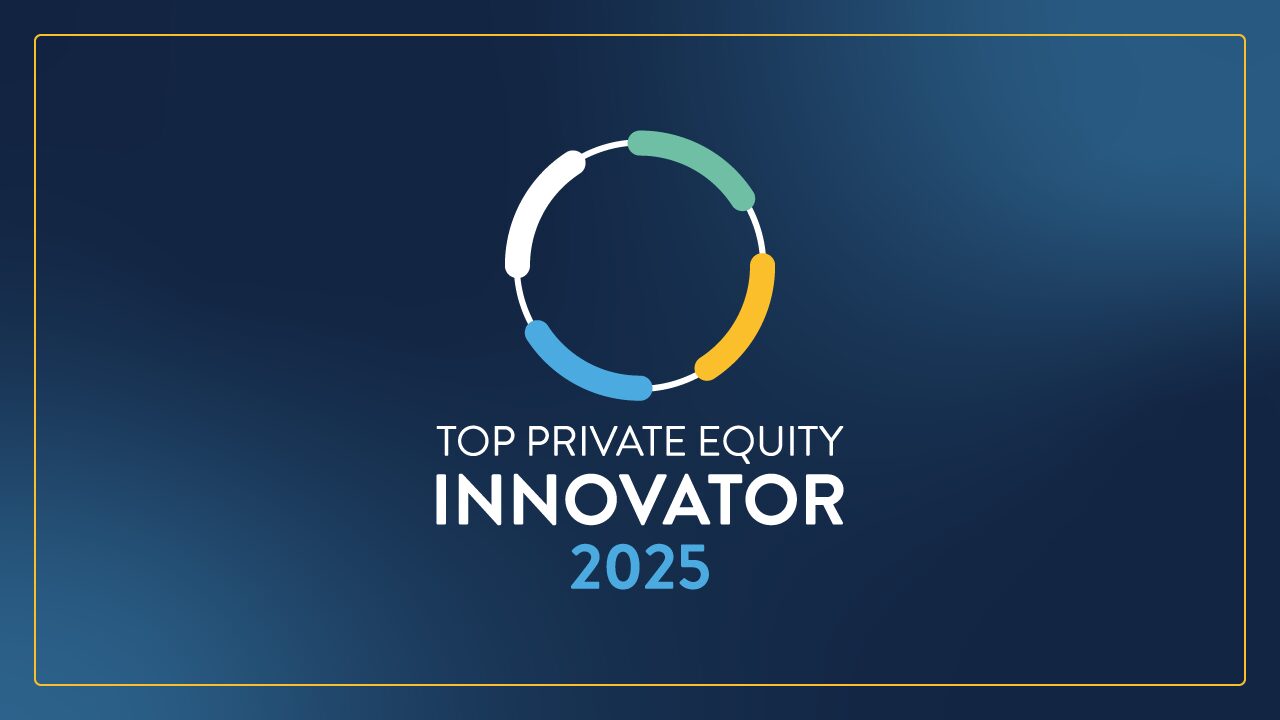Pam Hendrickson is Vice Chair at the Riverside Company and a trailblazer in the world of finance and private equity. Growing up in Manhattan she was surrounded by the world of business. However, as a kid, opportunities in business also felt far away, as finance at the time was a landscape that was largely dominated by men. If you know Pam, she’s not someone who shies away from pursuing her dreams. She learned through determination, collaboration, and optimism that anything was possible. Pam studied hard, worked evened harder, and, after graduating from Duke, followed by a degree from Northwestern’s Kellogg School of Management, entered the world of finance in New York City. She joined JP Morgan Chase, ultimately rising to Managing Director during a highly accomplished career spanning over two decades with the firm.
As her career progressed, Pam was ready for the next challenge and wanted to more directly help companies build and grow. In 2006, she joined The Riverside Company as their COO. Once again, Pam thrived in one of the most intellectually stimulating and most challenging industries to succeed. Today, Pam serves as The Riverside Company’s Vice Chairman, where she supervises some fund strategies and monitors and manages policy, political, and legislative risk for Riverside and its portfolio companies. All along the way, Pam has paved a path for subsequent generations of diverse professionals in finance and private equity, enabling opportunities for others to succeed and thrive as she has.
She was kind enough to carve out some time for us recently, and the interview was revealing in so many ways: from her inside-look into Washington (and perhaps why politicians aren’t all bad) to her approach to diversity. In an industry that’s squarely focused on monetary returns, her insights are priceless. Our collective hats should tip to this powerhouse who uses her voice for those who are often kept out of the conversation.
Sean Mooney: As the current Vice Chair of AIC, what are a few of the core initiatives you are taking on in terms of lobbying efforts for the PE industry?
Pam Hendrickson: My focus is on helping make sure that members of Congress and the Administration understand private equity’s positive role in local communities across the country. Our industry employs over 11 million Americans, supports thousands of small businesses, and delivers strong pension returns for retirees. Fortunately, more people on the Hill now appreciate private equity and the tremendous value we add to the American economy.
I’m also working to explain the real-world consequences of some recent proposals in Congress that would change the tax treatment of carried interest capital gains. I’m especially interested in explaining how these proposals would harm the entrepreneurial ecosystem for women investors and entrepreneurs. The Ways and Means legislation would penalize investment firms by creating a potential tax penalty for adding new partners to existing investments. This would disproportionately expose women to nearly impossible barriers as they work to climb the corporate ladder at a time when firms are trying to advance diversity within their own leadership ranks.
Washington is trying to move very quickly: it’s like being in a baseball game but not knowing what inning you’re in. Oftentimes the intention of these proposals isn’t nefarious or ill-intended; rather, haste makes waste and politicians are drinking massive amounts of information from a firehose. One minute they are talking to someone like me, with a private equity agenda. The next minute, it’s someone from higher education, renewable energy, or critical infrastructure. Our job [as industry insiders and lobbyists] is to inform them about the realities and potential negative consequences in a non-incendiary way so they will actually listen; subsequently, we hope they make decisions based on the data-rich information we have provided.
SM: How would you define the Riverside culture, and how does this impact your investment strategy?
PH: At Riverside, our mantra is very simple, rooted in the golden rule: treat others the way you would want to be treated. This way of approaching investments, problem-solving, conversation, basically everything, puts the onus back on the fund managers to ensure we are making decisions that we would also make for ourselves.
Here’s an example of how this cultural value is operationalized vis-a-vis our portfolio companies: Some years ago, we made an investment in an educational company founded by a former teacher who saw a gap in the curriculum for kids, especially those on the autism spectrum. She created an entirely new language based on symbols not on letters—and this system has gained traction and been widely adopted in special education circles.
After the acquisition, her daughter took over the CEO position; she had never been a CEO, but she was familiar with the company, having helped get it through its initial growth phase. Instead of treating her like someone who needed “schooling” from us, we approached it from more of a consultative standpoint. This is how I prefer to be treated when tackling something new. No one likes to be patronized. Instead, our role was being more of a sounding board— she was especially happy to have her private equity partners during the early days of the pandemic because they could provide both advice and capital. Today, that company continues to thrive, and she has exceeded our expectations.
SM: Why does diversity at the highest levels of a company matter?
PH: My personal view is that diversity has more to do with various ways of thinking, experiences, and skills, rather than what someone looks like. How someone thinks about solving a problem has less to do with their gender or race, and more to do with their cultural attitudes and the background they bring to the table: education, where they grew up, how they managed challenges. A second-generation immigrant from Cuba who grew up in a single-parent household is going to have a different perspective than someone like me who grew up on Park Avenue in New York. This is a wonderful and necessary form of diversity—particularly if we have a shared interest in reaching a goal or outcome. What we miss with homogenous “group think” is likely why we’ve had recessions, wars, and insert any form of negative societal output. It’s just better business to have high-powered seats filled with versatile approaches to problem-solving.
How does this play out in the boardroom? We recently had an investment committee looking at a deal that sat squarely in the female products market segment. More than half of the people sitting at the table had never heard of this product and they didn’t understand what it did or why anyone would want it. So, they deferred to those of us in the room who understood the potential value of this product based on our experience—not simply on the numbers being presented on the slide deck.
SM: How has private equity changed over the last twenty years? If you were to sum it up in less than 10 words, what would you say?
PH: Funds used to make money on the buy. Not now.
The expanded version is: there used to be a time when multiples were low, and you could buy low and sell higher to generate great returns. Now companies are expensive to buy, so they have to grow quickly, and you can’t save your way to prosperity. This notion that PE “flips and strips” is just so far from the truth. Our whole objective is to get growth because we can’t increase value without top-line revenue going up and to the right.
SM: What is your hope for the future of PE? Where would you like to see it change, move, and transform?
PH: In general, one astonishing thing about PE is how little it has moved to technology. People in this industry still rely on Excel for tracking, measuring, and reporting. At Riverside, we have moved to upgraded technology because we are a volume shop, and we can’t afford to throw people at everything. But funds need to embrace technology. You’d think there would be more technology solutions that integrate, but they don’t.
For example: while there are some good systems for CRM, these don’t connect to a portfolio company’s reporting system that also needs to connect to how you report to LPs. It’s all fragmented and disjointed. All sorts of systems do financial reporting, but then the systems that show how you create value within the portfolio companies are entirely missing. As an industry, we need to move from manual processes to streamlined technology solutions. There’s an idea for an aspiring entrepreneur!
On a brighter note: I am delighted by the increased number of diverse owners of private equity funds. These investors will ensure access to capital to a broader and more diverse base of founders, thus attracting new, innovative companies into the mix.
SM: What keeps you going during the difficult moments when negativity abounds, circumstances look bleak, the world seems to be imploding. What’s your “secret?”
PH: I’m pretty lucky because I have a “high happiness” set point. When bad stuff happens, I just move on. I realize this isn’t the case for many, so I am very grateful to have been built like this—it likely is part of the reason I’ve been able to take so many risks and last in the investment world as long as I have. I remember in 7th grade the headmistress at my school saying something like: “You just happily bounce along. You need to have more angst about things, Pamela.” I remember thinking that was the most ridiculous thing I’d ever heard. I bounced off, and, from what I can tell, I was right to ignore her advice.


